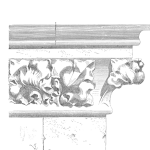
The Importance of the Discussions around MTBF Questions
The best way to help others understand and stop using MTBF is to engage them in a discussion. I get questions concerning MTBF or reliability a few times a week. I attempt to answer each and every one, plus adding a follow up question or two.
In person or online, ask and answer MTBF questions. You not only improve your understanding of MTBF and reliability, you improve your still at tell stories to help affect change across your industry. [Read more…]













